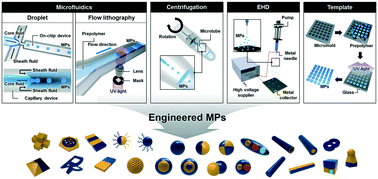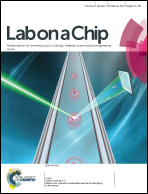Recent advances in engineering microparticles and their nascent utilization in biomedical delivery and diagnostic applications
Abstract
Complex microparticles (MPs) bearing unique characteristics such as well-tailored sizes, various morphologies, and multi-compartments have been attempted to be produced by many researchers in the past decades. However, a conventionally used method of fabricating MPs, emulsion polymerization, has a limitation in achieving the aforementioned characteristics and several approaches such as the microfluidics-assisted (droplet-based microfluidics and flow lithography-based microfluidics), electrohydrodynamics (EHD)-based, centrifugation-based, and template-based methods have been recently suggested to overcome this limitation. The outstanding features of complex MPs engineered through these suggested methods have provided new opportunities for MPs to be applied in a wider range of applications including cell carriers, drug delivery agents, active pigments for display, microsensors, interface stabilizers, and catalyst substrates. Overall, the engineered MPs expose their potential particularly in the field of biomedical engineering as the increased complexity in the engineered MPs fulfills well the requirements of the high-end applications. This review outlines the current trends of newly developed techniques used for engineered MPs fabrication and focuses on the current state of engineered MPs in biomedical applications.

- This article is part of the themed collection: Lab on a Chip Recent Review Articles


 Please wait while we load your content...
Please wait while we load your content...